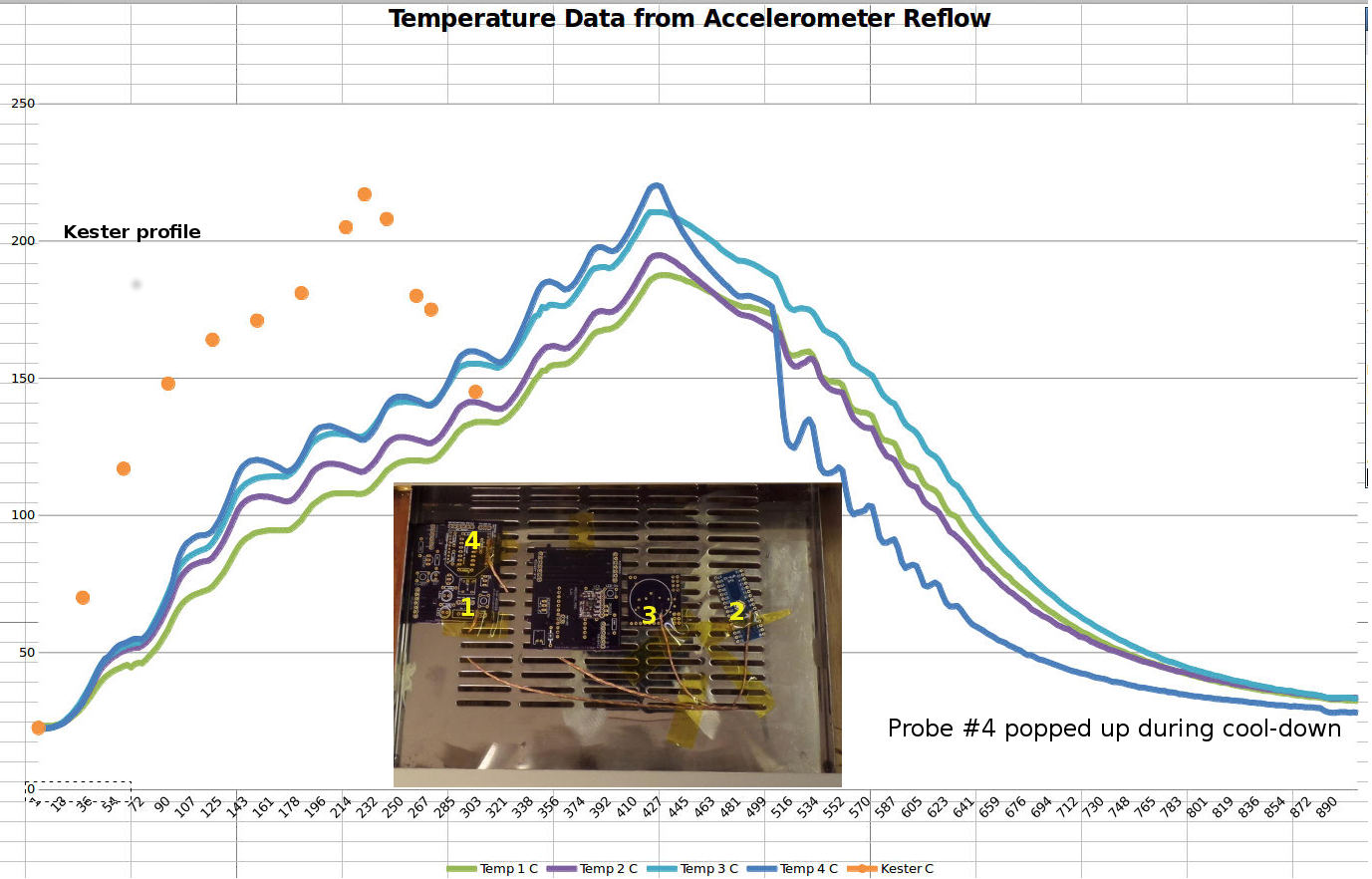
Click here for full size figure.
Here are the temps in degrees C vs elapsed seconds from four type K thermocouples on PCB surfaces in my T-962 (small) reflow oven running “wave 2” (regular lead solder paste) profile. The orange dots show the recommended Kester reflow solder profile for the solder paste used. Probes #1 & #4 are on the surface of a PCB on top of one other, while #2 & #3 are on PCBs sitting on the oven drawer surface. Probe #4 is directly under one of the quartz heating tubes while the others are positioned in between the two tubes. Probe #4 popped up off the board during cool-down, so it immediately got cooler as the fan blew on it (emulating the crazy-wrong temperatures showed on the T-962 front panel).
The executive summary is that the oven barely works in the middle of the drawer for a very liberal definition of “barely” (i.e. the duration of various temperatures and heating/cooling rates violate manufacturer’s specs by more than a little bit.
But this same run soldered an accelerometer breakout board well (looked good under a microscope and ran OK after a quick ECO unrelated to the soldering was applied). The breakout board is sitting just to the left of probe #3.
Chip McClelland set up the thermocouples and wrote the Arduino logger app running in his Sparkfun “Red board” while Gene Kahn and I provided moral support.
Next steps (in no particular order):
- Screw some aluminum angle stock onto the bottom of the oven and apply various other “patches” to reduce air flow in/out of the oven when the cooling fan is not running.
- Map the oven performance across the drawer space systematically using the scheme Gene suggested. Some “zones” will be marked on the drawer (maybe marker on small squares
- Add an “air stirring blade” of some kind to circulate the oven air (NOT blowing outside air into the oven as recommended elsewhere on the Internet).
- Switch to custom heating profiles to trick the oven into coming closer to a recommended profile.
- Switch to a custom controller that’s driven by board temperatures, not the temperature of the air above the boards. This will most likely use a Raspberry Pi running x11vnc and just hanging on the house LAN, so any other computer or laptop can run a UI for it.
